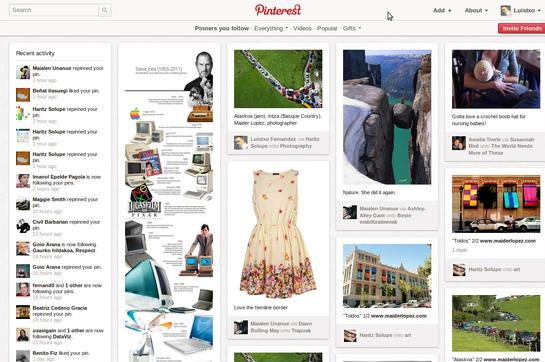
There’s been a whole lot of talk about Pinterest lately, with brands and retailers alike betting that the platform will live to become an important part of social media marketing. According to ComScore, Pinterest hit 11.7 million unique monthly U.S. visitors in January. The reach is clearly there. And there are some retailers for which the platform now serves as a customer-acquisition tool and a means of driving online sales.
“Pinterest brings together people with similar interests,” said Hayley Silver, vp of Bizrate. “Facebook is different in that just because we are friends doesn’t mean we’d be interested in buying the same products. Another unique opportunity [with Pinterest] is the ability to see a product within the context of your own lifestyle.”
A recent study by Bizrate investigates how Pinterest is affecting the way that consumers shop online. According to Bizrate, 37 percent of consumers have heard of at least one of the most popular social image-sharing sites, and Pinterest is in the lead in the categories of awareness and visitation. Thirty-six percent of consumers are aware that Pinterest exists, and 19 percent actually visit the site. Here’s the interesting part: Of those who have visited at least one of the most popular social image-sharing sites, more than 25 percent have made a purchase based off of images found on the site.
Zappos can attest to this. The online retailer was one of the earliest brands to add pin-it buttons throughout its site. The retailer also has a Pinterest brand page with 38 boards and 1,000 pins to date. Almost 700 people follow the brand on Pinterest.
“We do see sales come from Pinterest,” said Darrin Shamo, director of direct and online marketing at Zappos.com. He added, however, that the sales numbers are still fairly low. But Pinterest is still fairly new, and once brands figure out the platform, it could potentially become a larger sales driver for retailers.
Zappos isn’t the only retailer seeing bumps in sales as a result of Pinterest. Back in April, a Sam’s Club executive said that one of its recipes drew a lot of attention on Pinterest. The recipe for a turnover with two pieces of asparagus and cheese resulted in a bump in sales for Sam’s Club products that were key ingredients.
“At SamsClub.com, our team is committed to producing visual experiences around categories like meal solutions and outdoor living to engage, educate and entertain our members,” said Carrie Foster, a spokeswoman for Sam’s Club. “Pinterest is a wonderful experiential social media tool — a visual reader review — that increases awareness for the quality of our assortment through the eyes of our members.”
Additionally, online jewelry retailer Boticca.com did a study comparing Pinterest to Facebook. The study, based on a sample of 50,000 visits to the Boticca.com website from each platform during a 30-day period in March and April, covers users’ purchasing and engagement behaviors on the website across both platforms. For that month, Pinterest was the retailer’s No. 1 social outlet in terms of sales. Boticca has been driving traffic from ‘Pin It’ buttons on every product page, as well as from branded Pinterest boards. Boticca has about 40,000 followers across its 62 branded Pinterest boards.
Boticca found that Pinterest users are not afraid to spend money. The average order value of sales driven by Pinterest to the Boticca.com website has been $180, 10 percent higher than the Boticca.com overall site average and 90 percent higher than the average order value of sales driven by Facebook. Additionally, Pinterest drives more sales than Facebook (or any other social media channel). Pinterest influenced 10 percent of transactions on Boticca.com during the 30-day period, versus 7 percent from Facebook.
“Pinterest has more potential for driving retail traffic than Facebook does,” said Krista Garcia, an analyst at eMarketer. “Pinterest is more geared toward shopping than Facebook is. People compare the three biggies — Pinterest, Facebook and Twitter — and some are trying to make Facebook out to be a social commerce platform. But that’s not what people are going there for. On Twitter, people are going there for news. Pinterest is visual, and it’s all about the object and connecting with people through shared interests. It’s inspirational.”
More in Marketing

WTF is the American Privacy Rights Act
Who knows if or when it’ll actually happen, but the proposed American Privacy Rights Act (APRA) is as close as the U.S. has ever come to a federal law that manages to straddle the line between politics and policy.

Here’s how some esports orgs are positioning themselves to withstand esports winter
Here’s a look into how four leading esports orgs are positioning themselves for long-term stability and sustainability, independent of the whims of brand marketers.

Marketing Briefing: Marketers eye women’s sports as a growth area amid WNBA draft, record March Madness
Marketers are considering the space more this year, according to agency execs, with some noting that the women’s athletes may get more attention from brands ahead of the Summer Olympics this July.





